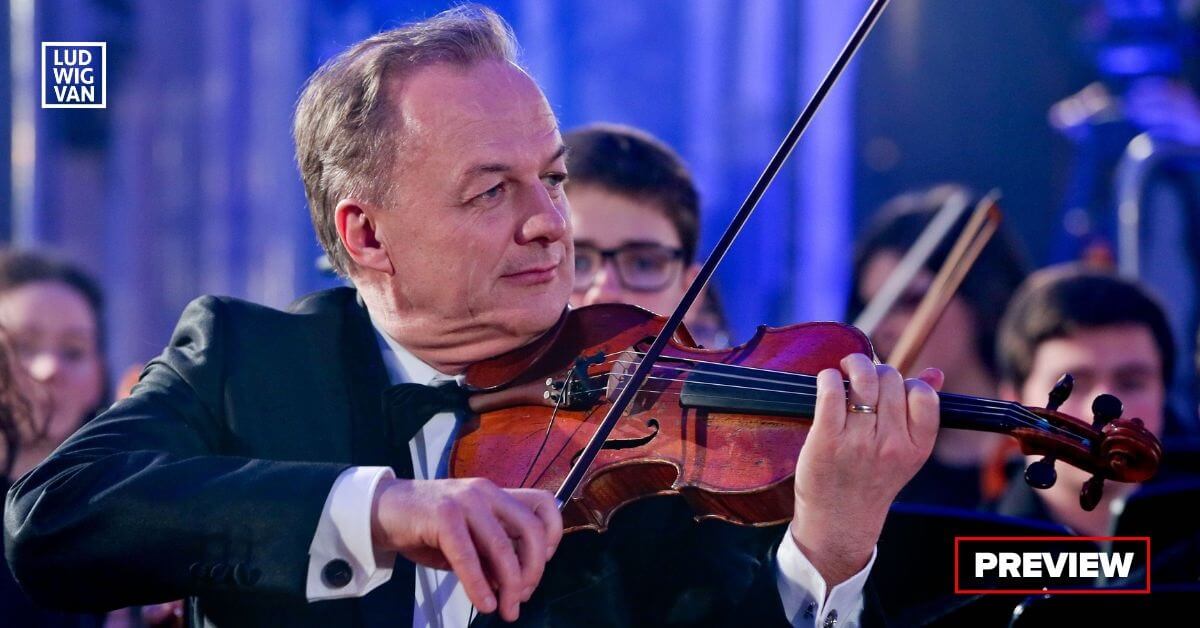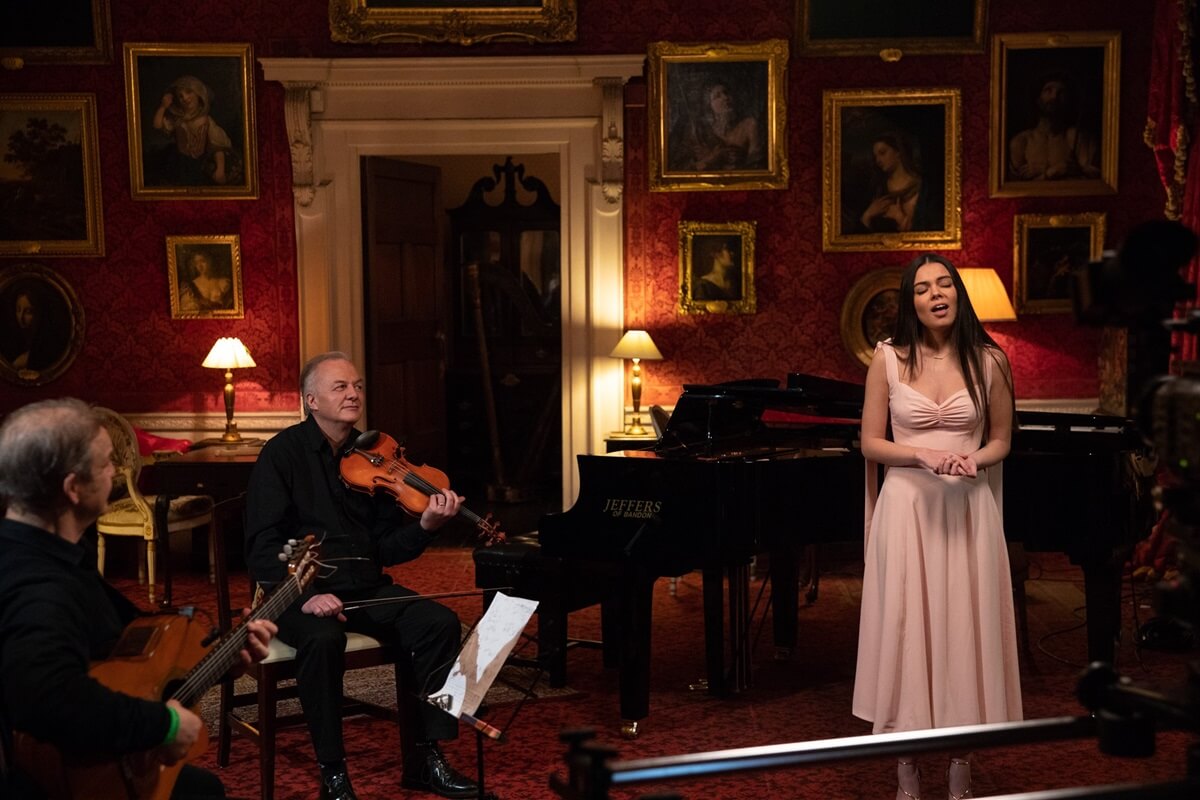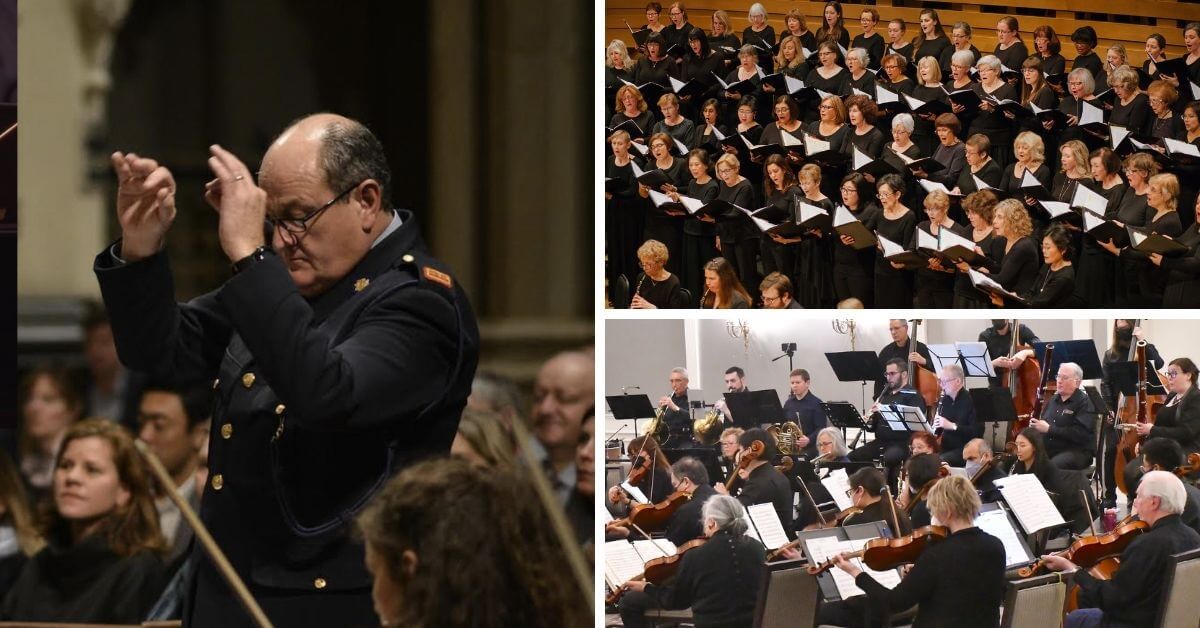
The ties between Canada and Ireland go back centuries. It’s a link that the Canada Ireland Foundation is dedicated to celebrating via the arts and culture, and a special gala concert on March 9.
Composer Odhrán Ó Casaide and a cast of musicians and performers will visit Toronto for the concert titled Bound for Canada: A Musical Journey from Hardship to Hope. We asked Ó Casaide a few questions about the piece he’s created for the occasion, titled Bound for Canada, the nature of traditional music, and the performers he’s bringing with him.
The Great Famine and Canadian immigration
Founded in 1997, the Canada Ireland Foundation (CIF) is responsible among other projects for Ireland Park, a sculpture park on Toronto’s waterfront. Robert G. Kearns, founder of CIF, saw Rowan Gillespie’s “Departure” series of sculptures in Dublin in 1995. They depict migrants on the waterfront, leaving due to the Irish Famine, and looking for a better life across the ocean in a new country.
He was moved to create a monument to those desperate travelers and the reception they received with sculptures that showed the Irish Famine immigrants landing in their new home in Canada. Ireland Park was opened in 2007 on Bathurst Quay. Jonathan M. Kearns, an architect and brother of Robert, designed the park, incorporating five sculptures that were also created by artist Rowan Gillespie. Collectively, they are known as “Arrival”.
The Irish Famine
In the late 1840s, a potato blight caused a devastating famine in Ireland. Local crop production would have been sufficient the Irish population, but much of the land was owned by absentee British landlords. The British government allowed exportation of food rather than using it to ease the suffering of Catholic Irish farmers, who relied on potatoes for subsistence.
Driven to desperation, between 1.5 million and 2 million Irish left the country, many to what was then British North America. The largest influx of famine migrants in Canada occurred between 1847 and 1852. In 1847, about 2,500 Irish refugees arrived in Kingston every week. By 1871, the Irish represented the largest ethnic group in most cities across Canada (with the exception of Québec).
While early Canada was no stranger to sectarian strife between Protestants and Catholics, there is also ample evidence of Canadians coming together to help the new arrivals, many of them ill.
It’s that welcoming reception that the concert commemorates.

Q&A With Odhrán Ó Casaide
Odhrán Ó Casaide is a lecturer and violin teacher at DIT Conservatory of Music and Drama (the Technological University Dublin), where he also heads the Irish Traditional Music program. With his brothers, he is also part of Na Casaidigh (also known as The Cassidys), a traditional Irish group that have been performing sicne the 1980s.
As a violinist, he studied with the concert master of the Vienna Phil, and has played as a soloist with many orchestras in the classical vein, along with his Irish traditional performances. He was asked to compose his work Marbhna 1916, which commemorates the 1916 Easter Uprising in Ireland, for the occasion of the Pope’s visit to the country in 2018.
Your work, both as a composer and performer, brings Irish musical traditions into the broader world of orchestral music. How important is it to constantly refresh and reinvent musical traditions to keep them current in a world that changes so quickly?
Traditional music is not a homogeneous body of music, even within a single country, and it is not static. In Ireland, I would include all folk music under this heading, but also a great deal of what might be described as the “art music” of its day, which has been absorbed into the popular culture. What all of this corpus has in common is popular acceptance. Public taste in music changes continuously and the best from every era will be absorbed into the tradition. For me personally, simply following popular trends has never been a goal, otherwise I would not write for an orchestra. On the other hand, no composer writes music purely for the filing cabinet. The music I write comes from deep within but, of course, that is influenced by my environment.
At the risk of simplification, many countries have developed a form of nationalist music whereby traditional elements, be they melodies, modal scales, rhythmic patterns and figures, ornamentation etc. have been incorporated into orchestral music. In Ireland, this tradition began with Charles Viliers Stanford, who composed his Irish symphony in the late 1880s. Many have followed in his path. I consider this work to fall within this tradition, with two exceptions; first, it is not purely orchestral, but also includes a choir along with traditional and classical soloists. Second, it is entirely original and does not incorporate any existent traditional melodies. It is a story, and at each stage I use the musical tools best suited to the task on hand. It also includes a narration, whereby the audience is kept in direct contact with the music and can follow the evolving story.
This work is a musical odyssey in that it is a musical representation of an epic journey, or voyage. But, it is in the Irish idiom through and through. It is a stage in a personal goal which I have pursued for many years, an attempt to reach a synthesis between traditional Irish music and “classical” music, something that has never been achieved with an orchestra. The scale of the challenge can be seen insofar as the sean-nós style of singing, or instrumental slow airs, affords the performer complete freedom of interpretation, including freedom from restrictions of meter. An orchestra cannot cope with this. In a sense one could say I am trying to square the circle.
The theme of Bound For Canada is described as a tribute to the resilience of early Irish immigrants, as well as the compassionate reception they got from Canadians. How do those themes translate into the music?
In this work I try to capture two main elements. First, we have the tragedy of the Irish famine, a period of five years during which the population of the country declined by 25%. It overshadows any other tragedy in our entire history. One needs the versatility of an orchestra with its depth and range of colour in order to express this. The orchestra creates the monumental background of the Famine, which accompanies the refugees and the trauma they experience throughout the journey.
Second, the story line is based on a true story of a young girl who manages to flee from Ireland to Toronto in the summer of 1847. In other words, it is not a work of fiction.
However, the details we have of her journey are very sketchy, and are supplemented with contemporaneous diaries and other materials, which describe what it was like. In this case, I wanted to capture the spirit of the common people who fled to Canada. They were Irish speakers; they had their own musical culture. Thus, the heroine of the piece sings in the traditional style, the sean-nós, uses the Irish language, we have some pieces of Irish dance music and we have leading exponents of traditional Irish instruments, the uileann pipes, or elbow pipes, and a fiddle played in the traditional style.
The charitable reception they received in Canada was an outstanding example of the very best of humanity. The work acknowledges examples of this. The many families who took in orphans, at great risk to themselves, are saluted with a chorale in French, as many of them were French speakers. The Sisters of Charity of Montreal, and other orders, are acknowledged with an Ave Verum in Latin. There is an Elegy for Dr. Robert Grasett, who sacrificed his life to attend to the emigrants, and a Valse Triste, in honour of all who risked their lives to provide succor to the afflicted.
Most important, the musical idiom of the work, from start to finish, is unmistakably Irish. This is not an accident, as I have been steeped in this musical tradition from infancy.
Does the theme of the music have a personal resonance for you?
I have been engrossed with the Irish Famine all of my life and I have always wanted to write a work dealing with this theme. This is partly due to the fact that I spent my early childhood in a poor rural district on the north-western seaboard of Ireland, a district that clearly bore the scars of the Famine and post-Famine emigration. The Famine was very much part of our folklore. Our grandparents would have known many people who survived the Famine, so that memories and personal experiences would have been very fresh.
Apart from that, the Famine has left a musical vacuum in its trail. Of all periods in Irish history, I do not know of any music or poetry composed in Ireland around that period. In all probability, people had more urgent matters to attend to. In addition, poets and musicians, who lived to a large extent from social support, would have been among the earliest victims.

Can you talk a little about the soloists who will be performing the piece?
Conductor: Superintendent Patrick J. Kenny
The concert will be conducted by Patrick J. Kenny, a superintendent in the Garda Siochana (Irish Police Force). He is conductor and musical director of the Garda Band, the band of the Irish Police Force.
Patrick J. Kenny has conducted several of my works to date with great sensitivity and nuanced understanding of the music. He conducted a performance of my Marbhna 1916, a requiem commemorating the Irish uprising of 1916. He also conducted An Forsa Nua (the new force) to mark the centenary of the foundation of the Garda Siochana.
Konzertmeister: Mathilde de Jenlis
Mathilde de Jenlis will lead the North York Concert Orchestra. A French national, Ms. de Jenlis is a great grand-niece of General de Gaulle, former President of France.
Mathilde de Jenlis is a graduate of the Brussels Conservatoire and has also obtained a master’s degree in Irish traditional music performance from the Technological University, Dublin. I have worked with her for several years and she has led the orchestra at the performance of many of my works. She combines absolute mastery of her instrument with great leadership skills along with a detailed knowledge and understanding of Irish music.
Sibéal Ní Chasaide (Vocals)
Sibéal is a rising star in the world of Irish music. Her focus is sean-nós singing, first and foremost and combines this with contemporary music. She has made several acclaimed recordings for Universal Records. Sibéal demonstrates great vocal skill with the technical demands of sean-nós (traditional style) singing. She appears regularly on Irish television and has performed in several of my compositions to date.
Niamh O Hanlon (Mezzo soprano)
One of Ireland’s leading sopranos, Niamh O Hanlon is hugely in demand throughout Ireland and the UK. She has also starred in many operatic roles. The timbre of her voice is particularly well suited to my compositions and she has already performed in some of my other works, notably, Marbhna 1916.
Lee Harding (Tenor)
Lee Harding is an up and coming tenor who shows a great sensitivity for Irish music. As a lyrical tenor, he is ideally suited to the role in this work.
Maitiú O’ Casaide (uileann pipes)
The uileann (elbow) pipes is the archetypical traditional Irish instrument. Maitiú is well known throughout Ireland and Europe as the piper in the Irish traditional band, The Bonny Men. In 2015, he won the Young Musician of the Year award in Ireland.
Michael Nielson (guitar)
Michael Nielson studied guitar at the Royal Irish Academy of Music in Dublin and Berkeley College of Music, Boston USA. He has also been soloist with the Irish National Concert Orchestra. Michael is a leading exponent of jazz guitar and has a special interest in improvised music.
I am also deeply indebted to the North York Concert Orchestra as well as the Toronto Choral Society for their participation in this concert.
Tickets for the Bound for Canada: A Musical Journey from Hardship to Hope concert on March 9, 2023 at the Winter Garden Theatre are on sale here.
#LUDWIGVAN
Get the daily arts news straight to your inbox.
Sign up for the Ludwig van Daily — classical music and opera in five minutes or less HERE.
- PREVIEW | Cellist Elinor Frey And London Symphonia Dive Into Jewels Of 18th Repertoire - April 25, 2024
- PREVIEW | The Hamilton Philharmonic Orchestra Says Good-Bye To Conductor Gemma New With Music - April 25, 2024
- THE SCOOP | Not-For-Profit Euterpe: Music Is The Key Received Three-Year Grow Grant - April 24, 2024



